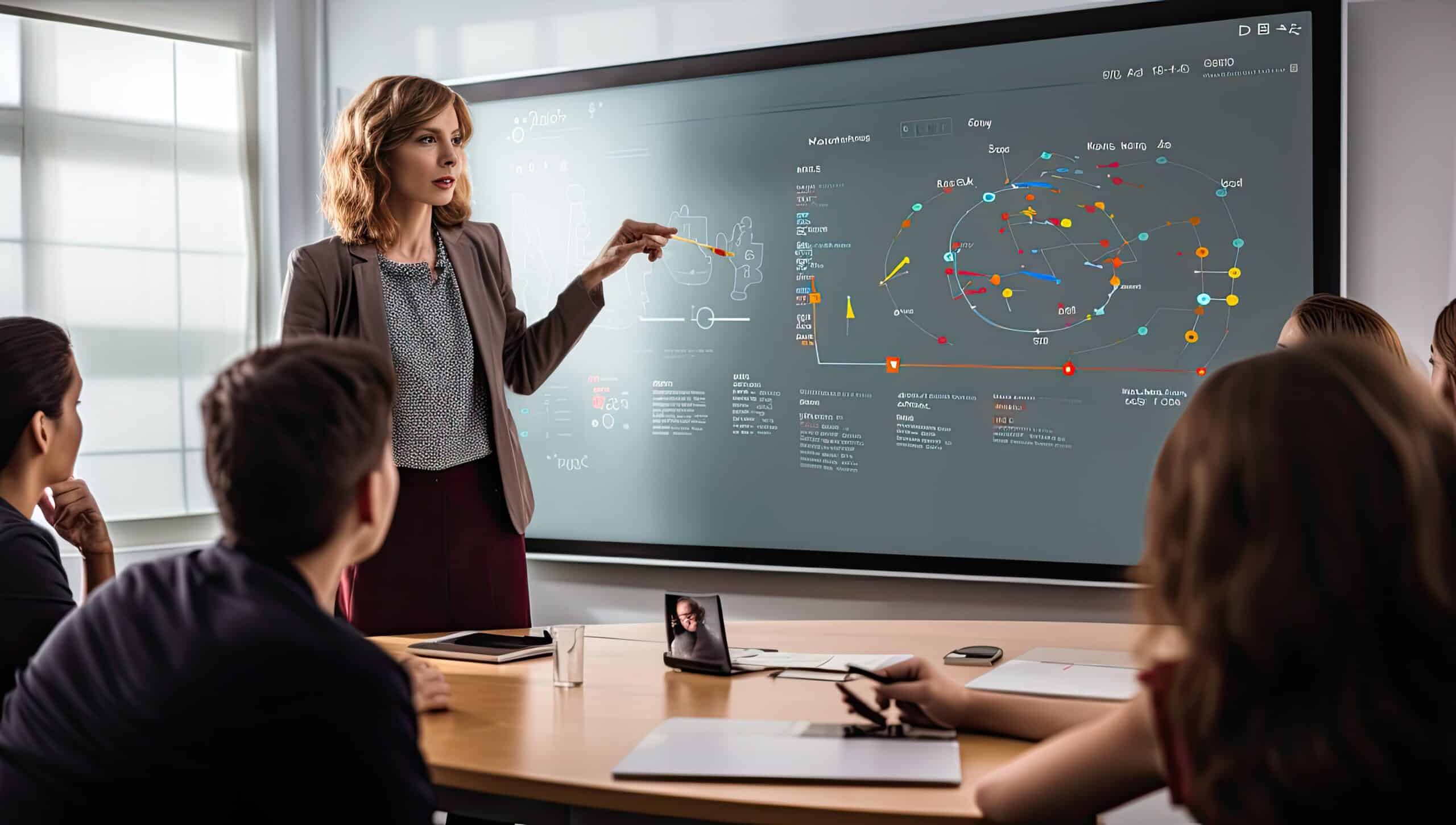What Is a Smart Board?
Key Takeaways
- Smart boards enhance the learning experience by providing interactive and engaging lessons that incorporate multimedia elements.
- Smart boards allow for customized teaching, catering to individual student needs and promoting a deeper understanding of the material.
- Smart boards are a sustainable and environmentally friendly option, reducing paper waste and promoting collaboration and teamwork among students.
A smart board, also known as an interactive whiteboard, is a technological tool used in education to enhance the learning experience for students. It combines a large format touchscreen monitor with powerful collaboration software, allowing users to draw, write, and interact with content using a stylus pen or their finger on the touchscreen surface. Smart boards are connected to a computer and projector, displaying an image of the computer screen on the board. This interactive feature enables students and teachers to engage with the material in a more dynamic and interactive way.
Advantages of Smart Boards
Smart boards offer several advantages that contribute to a more effective and engaging learning environment:
- Enhanced learning experience: Smart boards provide interactive and engaging lessons, incorporating multimedia elements such as videos, images, and audio. This multi-sensory approach enhances comprehension and retention of information.
- Customized teaching: Smart boards allow teachers to cater to individual student needs by adapting lessons to different learning styles and paces. This personalized approach promotes a deeper understanding of the material.
- Eco-friendly option: By using digital resources, smart boards reduce paper waste, promoting a more sustainable and environmentally friendly classroom.
- Promotes collaboration: Smart boards encourage collaboration and teamwork among students. They can work together on group projects, solve problems collectively, and share their ideas and insights.
- Prepares students for the digital world: In today’s digital age, it is essential for students to develop technology skills. Smart boards familiarize students with digital tools and equip them with the necessary skills for the future.
- Instant feedback: Smart boards provide instant feedback, allowing teachers to assess student understanding and adjust their teaching accordingly. This formative assessment helps identify areas that need further clarification.
- Flexibility in presenting lessons: Smart boards offer flexibility in presenting lessons. Teachers can easily switch between different media, rearrange content, and adapt their teaching based on student responses and engagement.
- Time-saving: Smart boards save time by reusing and updating lessons. Teachers can store and access previous lessons, making it easier to review and revise content for future classes.
- Makes learning fun and enjoyable: The interactive nature of smart boards makes learning more fun and enjoyable for students. It creates a positive classroom environment that motivates students to actively participate in the learning process.
Disadvantages of Smart Boards
While smart boards offer numerous advantages, there are also a few potential disadvantages to consider:
- Learning curve for operators: Some operators may find it difficult to effectively use smart boards, especially those who are not familiar with technology. Training and support may be required to maximize the benefits of smart boards.
- Cost: Smart boards can be expensive to purchase, especially when considering the additional costs of projectors, software licenses, and maintenance. Budget constraints may limit the accessibility of smart boards in some educational institutions.
- Software bugs and issues: Like any technological device, smart boards are susceptible to software bugs and issues. These can disrupt learning activities and require troubleshooting or technical support to resolve.
- Hardware fragility: Smart board hardware is delicate and prone to breakage, especially in a classroom setting where it may be subject to accidental damage. Regular maintenance and care are necessary to ensure the longevity of the equipment.
How Smart Boards Work
Smart boards function as interactive whiteboards with touch screens. They are connected to a computer and projector, displaying the computer screen on the board. Users can interact with the board by touching it, allowing them to click on buttons, highlight text, and drag and drop items. Smart boards use resistive technology or Digital Vision Touch to process the movement of a finger or pen tool when it touches the surface. Additional elements such as pen tools, software, video players, recorders, on-screen keyboards, and screen shades can be used with smart boards to enhance the learning experience.
Uses of Smart Boards in Education
The uses of smart boards in education are diverse and beneficial:
- Interactive learning: Smart boards incorporate multimedia elements to create interactive and engaging lessons, capturing students’ attention and enhancing their understanding of the material.
- Collaborative learning: Smart boards promote collaboration and discussion among students. They can work together on projects, share ideas, and learn from each other’s perspectives.
- Creating an engaging learning environment: Smart boards make learning fun and interactive, creating an engaging and motivating environment for students.
- Enhancing learning outcomes: By incorporating various interactive features, smart boards facilitate deeper learning and improve student outcomes.
- Improving accessibility for students with disabilities: Smart boards can be adapted to accommodate students with disabilities, providing a more inclusive learning experience.
Related Websites:
FAQs:
Q: What is a smart board?
A smart board is an interactive display board that allows users to control and manipulate digital content using touch gestures or a stylus pen. It combines the functionalities of a traditional whiteboard with the power of a computer.
Q: How does a smart board work?
Smart boards work by utilizing touch-sensitive technology and software that enables users to interact with digital content. They typically consist of a large LCD or LED screen with touch capabilities, connected to a computer or other devices that run specialized software for input and control.
Q: What are the benefits of using a smart board in education?
Smart boards enhance collaboration and interactivity in the classroom, making learning more engaging and interactive. They enable teachers to incorporate multimedia content, interactive exercises, and real-time feedback, leading to improved student learning outcomes.
Q: What are the key features to consider when purchasing a smart board?
When purchasing a smart board, it is important to consider touch sensitivity and accuracy, compatibility with different devices and operating systems, size and resolution options, as well as connectivity options and integration with other technologies.
Q: What factors should be considered before purchasing a smart board?
Before purchasing a smart board, factors to consider include budget considerations, available space and installation requirements, training and support options, as well as future scalability and upgrade possibilities.






